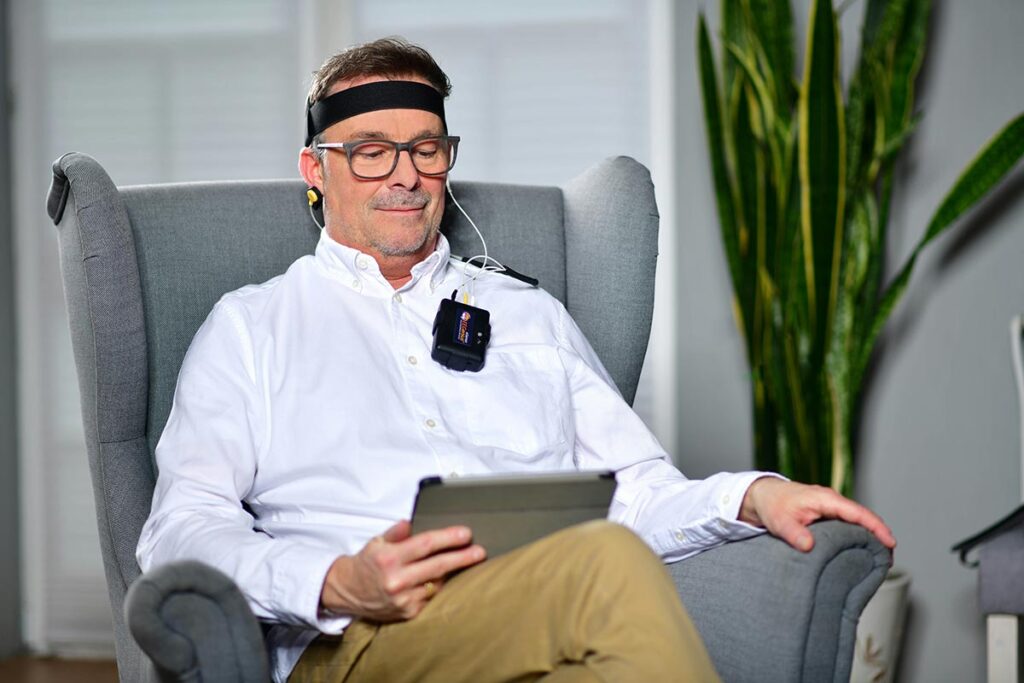The Comprehensive Resource Model (CRM) is a holistic approach that allows a person to process and release trauma. Traumatic experiences can have many long-term, damaging effects on a person, especially if they are left untreated. Because trauma impacts everyone differently, the treatments to overcome the issues it causes must also be varied. In addition, not all people respond to traditional methodologies for overcoming instances of trauma, especially if they have developed a substance use disorder in an attempt to cope with the fallout of trauma. Fortunately, many people have found great results with alternative forms of therapy.
In particular, alternative therapies that focus on the ability to unlock the trauma may also be able to release the hold of the associated substance abuse disorders. Eye Movement Desensitization and Reprocessing could help address trauma and its effects.
What Is the Comprehensive Resource Model?
The Comprehensive Resource Model (CRM) is a trauma treatment model that focuses on the neurobiological roots of trauma. It is designed to help those who experience traumatic experiences by connecting the healthiest parts of the person to their most primitive aspects. The goal is to neutralize the intolerable instances that occur when trauma resurfaces and replace them with healthy, positive effects that are now completely separate from the traumatic past.

While CRM targets many different cognitive processes, it specifically targets the memory and answers:
- What happened?
- What didn’t happen that should have happened?
- How has life been shaped or limited as a result?
This process is broken into two parts: resourcing and ego states.
Resourcing
While utilizing specific breathing exercises, grounding skills, intuition, and developing attachment neurobiology, a connection is made to the nervous system. This part of CRM is designed to bring a level of safety and comfort to the body and mind. That way, while experiencing the memories associated with the trauma, the person can unlock the parts of the memory that have been stuck and can open the door for new thinking patterns to emerge.
Ego States
When a person experiences trauma, the challenges caused by the event can result in changes both within and outside the brain. CRM proponents propose that within the brain, ego states—particular sets of thoughts, feelings, and behaviors—break away from the rest of the personality. These separated feelings and memories then return when the mind is reminded of the traumatic event and are where the roots of the trauma response exist. Through resourcing, safe access to ego states is created so that facing the trauma becomes easier.
Connecting Resourcing and Ego States
It is important to identify that trauma is not just overwhelming events such as war, assault, or abuse. While these major events are certainly traumatic, trauma can also be found in other events such as surgery, adoption, bullying, and more. In addition, some people who experience trauma do not realize that they were victims of the traumatic experience and unknowingly ignore the symptoms that develop in their life. Building connections with ego states using resourcing can help people deal effectively with trauma of all types.
The connection between resourcing and the ego states is built on our instinct for survival, meaningful shapes (sacred geometry), natural elements, and the relationship between oneself, intuition, and higher consciousness. A specialized sequence of these positive elements is accompanied by efforts to create awareness of eye positions that anchor the individual in the here and now. This provides a space to feel the impact of the trauma while remaining fully aware of the current moment, changing the impact of the memories.
What Is the Purpose of Eye Positioning in Addiction Therapy?
Research has indicated that the eyes are strong indicators of neurological disorders. Establishing specific eye movements allows the brain to focus on what caused the indicators to appear instead of using the eyes as a distraction from the memory. In this way, eye movements also help the person learn a sense of control over the process so they can focus on healing from trauma.

EMDR and CRM for Addiction Recovery
As indicated, eye positioning during the different stages of the process is a major component of CRM. This process is known as Eye Movement Desensitization and Reprocessing (EMDR). It should be completed in a one-on-one setting with a Certified Recovery Mentor.
Certified Recovery Mentors focus on patients that are recovering from substance abuse disorders, including those that involve drugs or alcohol. They are trained to help a person in recovery navigate complex treatment plans, enabling them to find the right treatments by aligning them with other people that can help aid in their recovery. Mentors typically have first-hand experience with addiction, which allows the empathy necessary to build a true mentor-patient relationship.
During the EMDR process, clients are encouraged to focus on trauma while also experiencing bilateral stimulation—when a stimulus is applied to both sides of the body. This stimulation tends to reduce the vividness of the memory and attenuate the emotions that are associated with it. Research has shown great success in this treatment’s ability to help in recovery from PTSD and substance abuse disorders.
With EMDR, clients do not have to rely on reliving trauma by speaking in detail about the event. Instead, this process seeks to give the power back to the brain by encouraging its natural healing processes. With the proper encouragement, the brain can change thoughts, behaviors, and emotions associated with the event. As a result, substance use is no longer needed as a coping mechanism to suppress resurfacing trauma.
How Does EMDR Alter How the Brain Addresses Trauma?
Because our brains have a natural way of coping with extreme stress, including in times of trauma, EMDR seeks to capitalize on that.
It does so by targeting three primary parts of the brain:
- The amygdala is the part of the brain that signals our body to react to stress.
- The hippocampus is the part of the brain that focuses on learning, including the associations it makes between safety and danger.
- The prefrontal cortex is the part of the brain that controls behaviors and emotions.

Unfortunately, traumatic events can root themselves in any of these three areas. When the event becomes rooted in the brain in this fashion, patients feel as though they are reliving it over and over again. This can cause greater distress and increase the risk of substance use and substance use disorders. Through EMDR, the brain is encouraged to process the information in order to begin healing.
When EMDR is administered by a trained Certified Recovery Mentor, it may be the answer many people with substance use disorder need, especially after traditional therapeutic approaches fail. As mentioned, a Recovery Mentor is someone who has been through the process before and is familiar with the approach and the results. This adds a layer of trust and comradery that can aid in recovery.
Many patients often begin treatment for trauma and substance abuse disorders with cognitive behavioral therapy and other forms of psychotherapy. Then, EMDR is usually the first alternative therapy considered. However, CRM can help those who may need additional treatments as a part of their therapy plan. Think of each type of therapy as a medication designed to accomplish a specific task that can sometimes be completed independently of other approaches. Most often, however, therapies work best in tandem for a complete treatment.

Phases of EMDR Treatment?
Through the course of multiple sessions, the EMDR process unfolds in eight phases, each focusing on the traumatic incident that may have led to further challenges like a substance abuse disorder. The number of sessions required for treatment depends on the patient and the progress made through the phases.
The eight phases are as follows.
1. Patient History and General Information
When starting the treatment, it is important for the Recovery Mentor to get to know you and your past. This conversation includes an explanation of the specific memories or feelings you are hoping EMDR will help with.
2. Preparation and Education
This conversation encapsulates what the treatment process looks like and what to expect from it. This will also begin the conversations around what to focus on that can provide stability during the sessions in order to help you learn to manage emotions.
3. Assessment
The assessment phase focuses on the beginnings of reprocessing. Through this phase, you’ll identify specific memories and themes you want to work on. Not only does this stage focus on how you may be feeling about what happened in the past, but it helps to focus on what you would like to believe about yourself as you begin to heal and move forward.
4. Desensitization and Reprocessing
This is the memory activation stage. Here, you identify one or more negatives you’ve noticed about your mind and body. These could be feelings, sensations, images, or thoughts that help to bring you to the root of the problem. Through reprocessing, you will focus not on how it made you feel at the time but rather on how you are experiencing the moment now, as well as what new thoughts you might be experiencing throughout the treatment.
5. Installation
Now that you have been exposed to the negatives, the process of replacing those negatives with positive feelings and energy can begin. As you reprocess the memory and mix it with positive energy, you begin to make new neural connections.
6. Body Scan
You will find during treatment that there is a focus on how you feel. This isn’t just how you feel emotionally but also how your body is responding. This should include a reflection on the symptoms of the memory, as these are often where negative coping mechanisms are rooted. The symptoms slowly reduce themselves with each treatment until they likely subside altogether.
7. Closure and Stabilization
This is the bridge between sessions that builds the longevity of this healing process. The closure and stabilization phase is a conversation surrounding how to remain emotionally and physically stable between sessions. Generally, sessions will not end if you are in a heightened emotional or physical state as a result of the memories that you are exploring.
8. Reevaluation and Continuing Care
This is an ongoing phase that monitors your progress and helps to determine if additional sessions are needed in order to meet the goals you set for your EMDR experience. You will have conversations about what moving forward looks like and what you may expect to encounter from these experiences.
What Is EMDR Therapy Used For?
EMDR is commonly used to treat trauma, the resulting post-traumatic stress disorder (PTSD), and the associated substance use disorder.
However, the treatment has been shown to have great success with many disorders, including:
- Anxiety
- Depression
- Dissociative Disorders
- Eating Disorders
- Gender Dysphoria
- Obsessive-Compulsive Disorder
- Personality Disorders

Many of these disorders manifest as a response to a larger trigger. The purpose of both CRM and EMDR is to target specific memories and work to ease the pain of the trauma in order to avoid the complex disorders that can come along with it. CRM and EMDR are meant to target and overcome specific memories that have rooted themselves in a person’s psyche. By attacking these memories, their impacts are addressed, as well. Instead of trying to stop the behaviors associated with substance use disorder, this treatment focuses on the cause.
Seeking CRM Treatment
Evaluate your specific needs with a coordinator to determine if types of therapy, such as CRM and EMDR, are best for you. Trauma is complex and often requires a variety of different methodologies to successfully treat. However, it is important to note that trauma is best resolved when the rooted memory is specifically targeted and healing is focused on rebuilding new connections.
Resources:
- https://www.ncbi.nlm.nih.gov/pmc/articles/PMC3951033/
- https://www.ncbi.nlm.nih.gov/pmc/articles/PMC305136
- https://www.tandfonline.com/doi/abs/10.1300/J034v08n02_01

Medical Director
Michael D. Stone, MD has been in practice for over 30 years. He graduated from Medical School in 1986 and attended LA County/USC Medical Center Residency in the field of Emergency Medicine. He is a practicing E.R. doctor at 2 hospitals in the Southern California area. Dr. Stone also has a Specialty in Chemical Dependency and Addiction Medicine for 22 years. He is the Medical Director of numerous Residential and Outpatient Facilities in the Los Angeles area. Dr. Stone’s interests outside of medicine include a commercial pilot, all outdoor activities including skiing, fishing and boating.




















